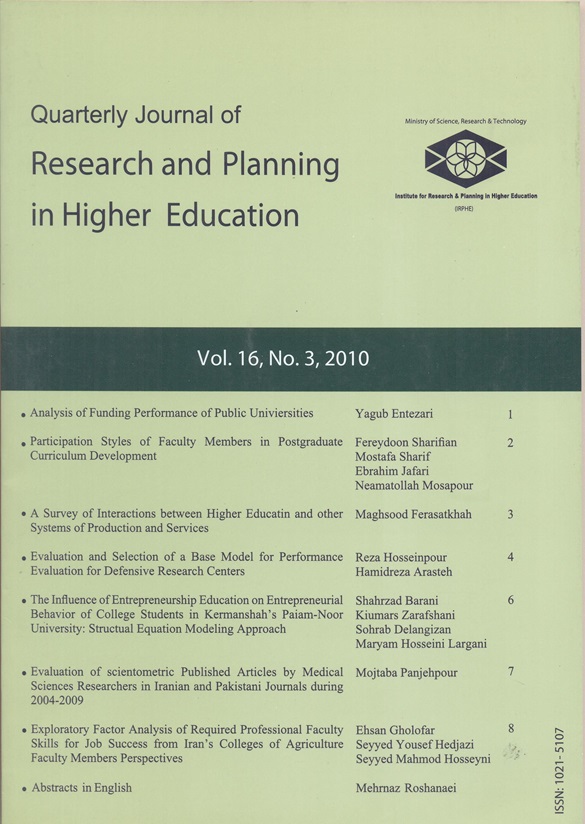Evaluation and Selection of a Base Model for Performance Evaluation for Defensive Research Centers
Authors
1 Cultural and Social Sciences, Imam Hossein University
2 Higher Education Administration , Tarbiat Moallem University Tehran
Abstract
The experience of advanced countries shows that using a systematic approach in determining strategic objectives, evaluating performance and using results for performance improvement is a vital principal in success of organizations. The performance evaluation of defense research centers, budget allocations, development and outfits, the closure, merging or ranking of these centers in accordance with 20 year outlook defense research plan are all among the major concerns of defense research management. The purpose of this research was to design an appropriate performance evaluation system for defense research centers in line with the objectives of Iran's defense research system. This was carried out through background review, identification of current performance evaluation models for research and non-research organizations, identification of defense research centers characteristics, identification of constituencies and stakeholders needs. Furthermore, current indicators were reviewed and reformed. The population of this study was a group of high level managers and specialists in the field of performance evaluation and related fields. A sample of 22 qualified people was selected. This research utilized methods such as interviews, surveys and counseling meetings with the elites. Using literature review, different performance evaluation models were carefully evaluated. One-sample t test, and analysis of variance were used. Finally, by selecting Balanced Score Card (BSC) as a basic model, a performance evaluation system for defense research centers was designed and presented. The result of study indicated that the selected model for performance evaluation of these centers is characterized by comprehensiveness, compatibility with strategies, capability for continuous improvement, dynamics, standardized scoring, user’s friendly and symmetry.
Keywords
 Quarterly Journal of Research and Planning in Higher Education
Quarterly Journal of Research and Planning in Higher Education
